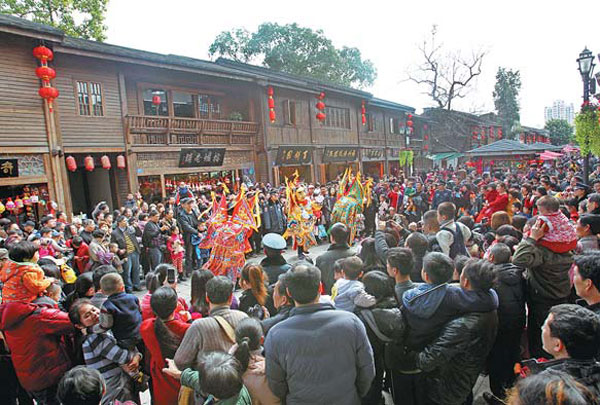 |
|
Cultural shows are often held in Three Alleys and Seven Lanes in Fuzhou. [Zhu Xingxin / China Daily]
|
The neighborhood gets its name from a Tang Dynasty legend that boasts of the first-class dishes and impeccable service of five restaurants owned by a family surnamed Cai.
Walking among the buildings is like walking down the city's memory lane. Almost all of the traditional houses were built with huge granite slabs mixed with red brick in what seems like an irregular pattern, but which is a distinctive style of southern Fujian architecture. The architectural craftsmanship is illuminated by the Cai Family ancestral hall, the centerpiece of the district.
In honor of the family who operated the five restaurants, the hall has a graceful swallowtail roof ridge that is dotted with intricate carvings of flowers and birds. Vivid brick sculptures of people and time-honored couplets are inscribed on pillars featuring vigorous cursive script.
Quanzhou bustles with a lively street food scene, which last year attracted A Bite of China, the documentary series about Chinese cuisines, to film in the city.
Top on the recommendation list are beef noodles that have a chewy and tender texture and paste noodles, a signature local soup that combines thread-like noodles, shrimps and clams.
A trip to the provincial capital of Fuzhou would be incomplete without visiting the Three Alleys and Seven Lanes, a century-old neighborhood crisscrossed by ancient lanes and alleys.
Featuring the architectural complexities of the Ming and Qing (1644-1911) dynasties, the area is known as the "living fossil of ancient city street system". With Nanhou Street as the neighborhood's axis, there are three historic lanes to the west and seven alleys to the east.
We Recommend:
